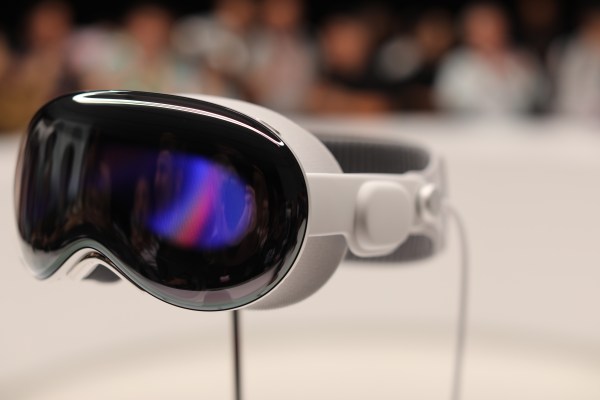Unity this morning announced that it has opened the beta version of its development platform for visionOS. PolySpatial, which was announced in conjunction with Vision Pro headset at WWDC, is designed to help developers port and create a 3D experience for Apple’s “spatial computing” platform.
The platform is designed to remove as much friction as possible during the development process, offering familiar workflows to those who have already built applications with the Unity Engine.
Unity Create president Marc Whitten notes there are still challenges building such an app for a piece of hardware that purports to offer a paradigm shift for computing.
“[W]e had to work, ground up, to make sure we could make it easy for our creators to unlock capabilities,” he tells TechCrunch. “Primarily that’s things like Unity application existing in a shared space with other applications, being able to integrate with Reality Kit and the visionOS. It’s not just ‘you can put Unity up in the slate’ (which is supported on day one), but you can actually put it inside of real space and with other experiences at the same time — whether they’re Unity, RealityKit or other Apple experiences.”
The WWDC keynote was noticeably light on Vision Pro gaming experiences — something of a surprise, given Apple’s considerable push to bring games to iOS and macOS over the last several years. This is likely due, in part, to the company’s positioning of the product as a productivity device. In a shift from traditional notions of extended reality, demos largely revolved around office and creative workflows, with a side of enterprise applications.
Of course, gaming has been an important driver for virtually every computing platform, and the availability of unique experiences will almost certainly play a role in the Vision Pro’s fortunes.
“We know there is a huge community of developers who have been building incredible 3D experiences using Unity’s robust authoring tools, and we’re so excited for them to build apps for Apple Vision Pro,” Mike Rockwell, VP of Vision Products Group, said in a release tied to the news. “Unity-based apps and games run natively on Apple Vision Pro, so they have access to groundbreaking visionOS features, including low latency pass-through and high-resolution rendering.”
PolySpatial will almost certainly be used to port existing titles to the new platform to start. Building new experiences from scratch is considerably more resource intensive for obvious reasons.
One such example is What the Golf?, a crowdfunded game launched as part of Apple’s Arcade offering in 2019 (macOS, Windows, Nintendo Switch and Steam versions have since followed). The game’s developer, Triband, has already begun using PolySpatial to port the title.
“Unity’s multi-platform support and comprehensive development tools allowed us to leverage our existing Unity knowledge and repurpose content from our games to create a fun experience that works great on Apple Vision Pro,” Triiband CEO Peter Bruun said in a release.
Content is everything when it comes to launching a new platform. There’s a bit of a race against the clock ahead of the Vision Pro’s release early next year. While Unity won’t offer a timeframe for the public version of PolySpatial, the limited beta release should give interested developers time to create experiences for the hardware.
Beginning today, Unity is letting in those who signed up for beta in waves. The company says it isn’t prioritizing AAA developers (though some will be included) and is instead choosing beta users based on the feedback it’s soliciting.
“We work very closely with creators all throughout the process,” says Whitten. “We start with the beta; it gets them in to understand where the workflow is unclear or where there’s some problem with our particular support that makes it harder than it should be. We can fix those as we continue to scale it out beyond beta. We work very closely with developers at every stage of their creation.”
